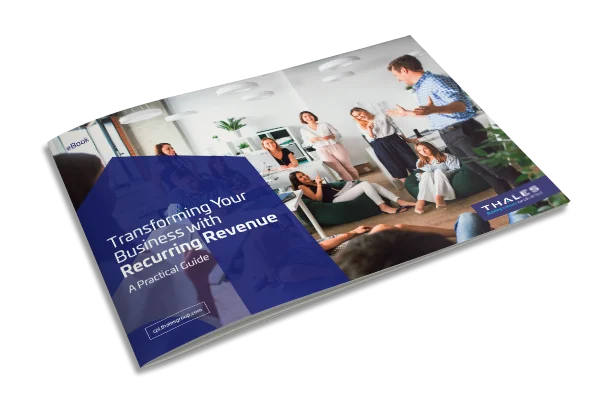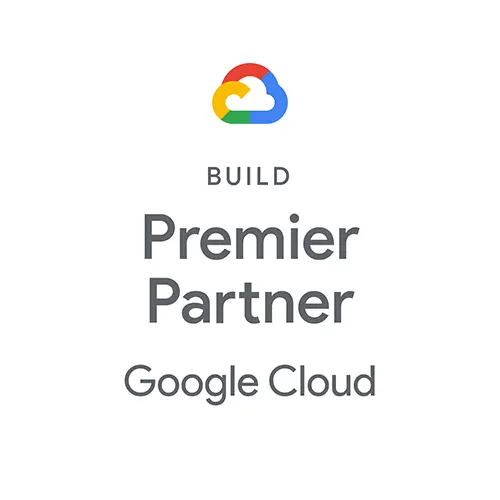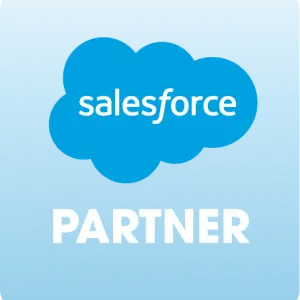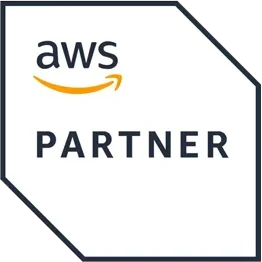If you’re like most of us, you probably think creating new products is the key to innovation. Think again. Top-tier companies always invest in R&D and product innovation — but they also grow software revenue through monetization.
With innovative packaging and licensing capabilities, they re-package their existing solutions to provide more value to existing customers and expand into new markets.
For years, leading software providers have relied on Thales’s solution for flexible packaging and licensing. We’ve always touted its importance. But today, an infrastructure that enables packaging flexibility is not just a nice-to-have. It’s fundamental to remaining competitive.
In this article, we'll explore four ways to grow software revenue using innovative software packaging and licensing. We'll also discuss how a robust software licensing and entitlements platform like Sentinel can enable flexibility at scale, without increasing engineering costs.
Your software holds the key to recurring revenue.
Don’t leave money on the table. Struggling to make the shift?
This guide shows you how to unlock new growth.
1. Grow Software Revenue with Industry-Specific Packages
Tailoring software product packaging to meet the unique needs of a new vertical can be a game-changer for businesses. Selling into a new vertical is a critical way you can unlock untapped revenue streams and provide access to a whole new world of customers.
Re-Package Existing Features for New Markets
This is especially true if you’ve hit a growth plateau. You can’t afford to fall behind competitors and lose market share. But there is no reason to stay put and watch profits decline. Instead, expand into new markets to revitalize your business, tap into new revenue streams, and stay relevant.
This growth lever ensures you maintain your successful core product while driving new revenue from a new vertical. It’s also practical. It lets you try a bold new approach without huge go-to-market time, development capital, and human resources.
Example: Autodesk
Autodesk provides software solutions for architecture, engineering, construction, manufacturing, and media and entertainment industries. Autodesk offers different software packages with different licensing options for each industry.
2. Let Customers Select Features That Align with Value
As with the first option, this method is based on feature customization. But rather than creating unique packages by industry, your customer picks and pays for the features and functionalities they want.
Let Customers Pick Features and Functionalities They Value Most
It’s similar to assembling your perfect salad at the salad bar. You include the exact veggies, toppings, and dressing you want, in the quantities you want. Similarly, when choosing features and functionality in software, users can select the components they prefer, and the configuration they need. À la carte packaging provides an additional benefit: it gives users a sense of control over the outcome, allowing them to create something that is tailored to needs and that they are more likely to be committed to using.
Example: Atlassian
Within the Atlassian product suite, a customer may purchase Jira Software for project management and Confluence for team collaboration and knowledge management. They can select which features they want to enable in each product, such as agile boards, custom fields, and workflow automation in Jira Software, and page templates, comments, and analytics in Confluence.
3. Add Additional Licensing Options to Your Pricing Tiers
Most B2B SaaS companies have already embraced tiered pricing. Typically, customers get access to increased features and functionality as they move up levels.
A less explored and equally valuable axis for packaging flexibility uses the type of license offered. For example, a basic offering might be licensed by seat, meaning that customers pay per access to a licensed seat. This is a good option for customers who want basic access without the need for much variance.
On the other hand, a mid-tier package might offer feature-based access in addition to basic seat access. This additional licensing level provides customers with the ability to entitle a specific user to access additional features that aren’t included with his or her user license.
Allow Advanced Licensing Options Within Existing Tiers
Finally, an enterprise-level package might have pay-as-you-go licensing, where customers pay for the software based on usage. This option works well for larger companies with fluctuating needs. They can scale their usage up or down without committing to a fixed number of seats.
Important note: it’s essential to consider the cost and operational implications of allowing such a bespoke level of customization. If you choose this direction, it’s best to set up an infrastructure like Sentinel Entitlement Management to support complexity in alignment with the product, including billing systems, licensing servers, and customer support.
Example: Salesforce
Salesforce offers several pricing tiers, including Essentials, Professional, Enterprise, and Unlimited. Each tier includes different levels of features, capabilities, and licensing options. Customers can choose the pricing tier and licensing option that best fits their needs and budget.
4. Monetize Support and Training
Licensing isn’t just for software anymore. Think outside the box and sell targeted support and training that helps your customers adopt your product and achieve success. This value-add reduces churn and creates a better customer experience, all while growing software revenue.
License and Monetize Your Support and Training Services
For example, you might offer your basic users a free basic support package. It could include a perpetual license that provides access to documentation and user forums.
When you expand your offering to meet the needs of enterprise companies, you can monetize further by licensing advanced support and training. Your enterprise-level support package could include a subscription to custom development teams and dedicated account managers. By providing this level of support your most valuable customers know that they can count on your partnership to ensure their success. At the same time, the subscription licensing provides you with recuring revenue from support and training.
For more information on operationalizing this process, see entitlements for support and training.
Example: Microsoft
Microsoft's Enterprise Agreement includes a subscription to advanced support services, which could include custom development, dedicated account managers, and 24/7 phone and email support.
Operationalize Packaging Flexibility at Scale
When it comes to revenue diversification, the key lies in finding the right combination of packaging strategy and operational capabilities. By integrating seamless workflows and robust management tools, you can open the door to maximum revenue potential.
Thales' Sentinel Platform offers comprehensive licensing and entitlement management capabilities, empowering vendors of all sizes to implement sophisticated pricing and packaging strategies. With our flexible licensing models, entitlement management, usage tracking, and license enforcement features, Sentinel is purpose-built to support your most ambitious goals.
These companies are highlighted as examples of best practices, not as Thales customers.




